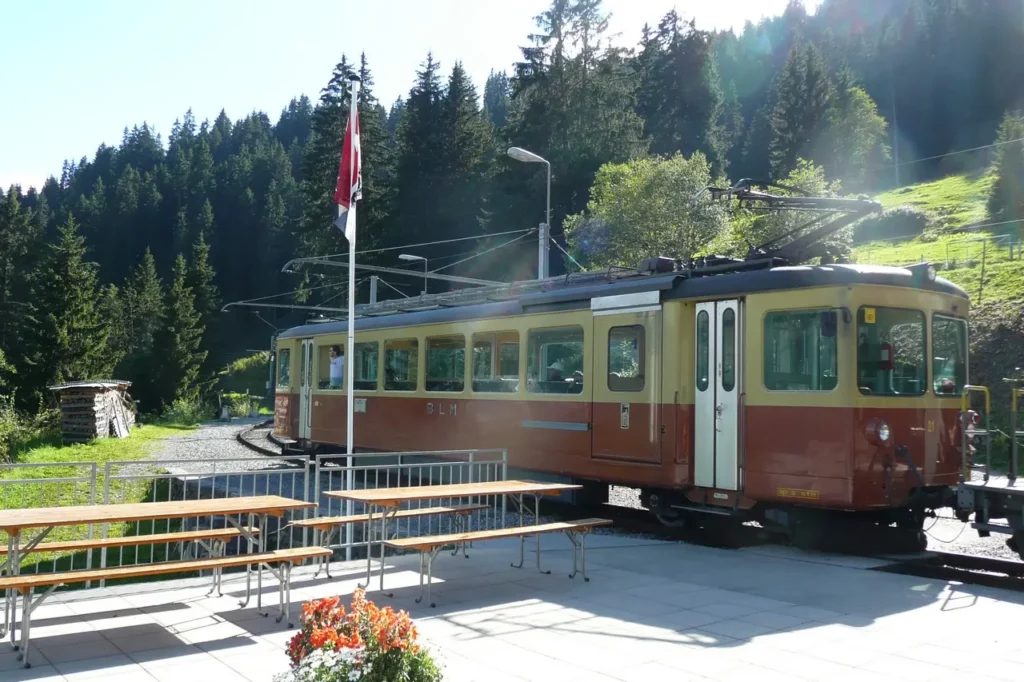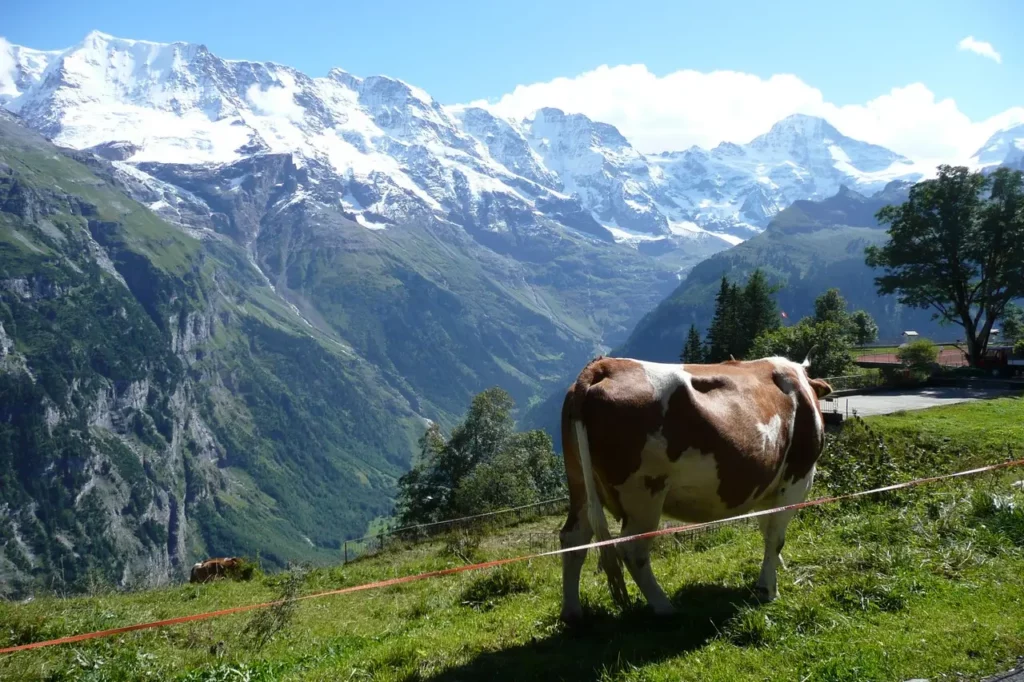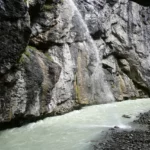Last Updated on 14/05/2023
Mount Jungfrau is not the highest mountain in Switzerland, but it is probably known more than others and is proudly called the “Top of Europe”, because the highest railway station in Europe was built here. This viewpoint attracts a lot of tourists both in summer and winter. In this post some advice for orientation: where to stay in Jungfrau region, how to get and what about altitude sickness.
The main thing in Jungfrau region, in my opinion, is not so much this station on the ridge between Jungfrau and Mönch, but the deepest gorges, rocky slopes, countless waterfalls, milky blue-green rivers and lakes, forests, which can be reached by railways, cable cars and simply on foot.
Attractions map – here.
Grindelwald, Lauterbrunnen
Interlaken, Schynige Platte
Meiringen, Brienz Lake, Ballenberg
Thun Lake
Switzerland by car
Since 2001, the Jungfrau with the surrounding mountains and the Aletsch glacier, the longest European glacier (24 km), which descends on another, southern slope, are included in the UNESCO list.
It is better to spend at least five days in the Berner Oberland region. However, here and for two weeks there is a lot to see. Especially if you first settle closer to the mountains, and then closer to the lakes.
It is certainly not worth going for one day or just passing through, planning to visit only the Jungfrau.
Firstly, this way you will miss a few more notable places. Lauterbrunnen (also known as the Valley of Thundering Falls) is definitely a MUST see. Shynige Platte – stunning views of the entire region and two lakes. Mount First – mountain lake, walking trails and First Flieger.
Secondly, many do not think at all about the need for acclimatization to the highlands. But the likelihood of getting altitude sickness is not zero.
Practical advices
Transport
More details about transport and advantageous travel tickets on the page “Transport. Switzerland”, on a separate page – about transport in the region. Here we will describe only in general terms.

You can get to Interlaken by
high-speed trains going through Bern;
from Lucerne and Montreux on the Golden Express and regional trains on the same route;
from Brig, Zermatt and Italy on express trains and regional trains running through Spiez.
The trains of the mountain railway rise from Interlaken to the mountains. Twin trains (Lauterbrunnen from the head, Grindelwald from the tail) go up to Zweilutschinen. There they split up and go to the respective stations. In Grindelwald and Lauterbrunnen, you can change to trains to Kleiner Scheidegg. And there you can change once again to a train to Jungfraujoch, the end point.

Ships run on both lakes, Brienz and Thun, between which Interlaken is located.
Travel by car
In the Bernese Highlands, you will be dealing with local roads.

They can be fast and not bad or slow, with a lot of circles and twisting. The most difficult option is Bergpoststrasse – indicated by a yellow horn on a blue background. Mountain post roads give priority to public transport. Two cars past each other very close. But the driver must let the bus go, hiding in the nearest pocket. The bus makes itself felt with the sound of a horn.
Jungfrau region Where to stay
Down below
There are many opportunities for accomodation, but there are also a lot of people. And in the peak season (July – early September, closer to the mountains in winter), finding an inexpensive good place is very, very difficult. In many places, already at the end of summer, rooms are booked for the new year. In terms of transport, Interlaken is the most convenient for accomodation. But for acclimatization, it is more correct to choose Grindelwald or Lauterbrunnen. Let’s consider what you need to pay attention to.
Interlaken is a relatively large city. There are two railway stations – Ost and West. Trains upstairs and ships on Lake Brienz leave from Interlaken Ost. City center and ships on Lake Thun – at Interlaken West station. From one to the other – 30-40 minutes walking. Untersee is also Interlaken, just across the river from Interlaken West station.
About Interlaken.
Avoid hotels and houses on the main street – it is very noisy. Guests of Interlaken and surrounding villages are given a guest card, which can be used for travel free of charge within the area. As disadvantage, Interlaken is not as picturesque as other options. You also need to go or walk to the lakes.
With a view of the lake and very good transport connections, you can settle in Böningen (bus to Interlaken Ost 7 min) or Goldswil-Ringenberg (train, bus or walk to Interlaken Ost, depending on the location). No lake view, but convenient – Wilderswil is the first station up after Interlaken.
Also relatively convenient for accomodation, especially if you were already above, are Spiez (20 min to Interlaken), Thun (40 min) and Brienz (half an hour to Interlaken by train).
Brienz is located on the shore of a lake, picturesque in itself. There are also attractions there. From here it is close to Meiringen, closer to Lucerne.
Spiez is convenient for those who want to visit Montreux or go to the Aletsch glacier. From Spiez you can get to Milan in two hours.
Thun is a fairly large city. It is worth settling here only if the hotel or apartment have good transport connection.
About Lake Brienz and Lake Thun.
Above
Now let’s turn our gaze upward. Accommodation in the mountains is convenient both in terms of acclimatization and in terms of a significant reduction in travel costs. At the same time, it is not difficult to get to the lakes, Brienz, Meiringen, Thun, Bern. But it takes longer to get to Lucerne, Brig and the Aletsch glacier, Montreux. The main pitfall is to correctly estimate the location and not settle as far as the swiss crow flies.

Lauterbrunnen is extremely picturesque and close to Interlaken (20 min, Jungfraujoch – 1 h 40 min). The valley is relatively flat, so there is much less chance of settling too high. From the disadvantages – the village is small. There are not very many places for accomodation, but there is an extensive camping.
About Lauterbrunnen.
Grindelwald (30 minutes from Interlaken, 1 hour 35 minutes from Jungfraujoch) is a popular resort. There are many hotels and apartments here. However, the village is located on a steep slope. Therefore, houses in the third line and further from the main street, which runs from the main station towards Grosser Scheidegg, are decently down or up the slope. A particularly uncomfortable (but certainly with good view) is Terrasenweg.
The Grund railway station is located at the very bottom of the valley. From there you will have to go up by bus or rail. The road from the station towards Interlaken also descends quite quickly, so you will have to climb from the hotels on this road.
About Grindelwald

Follow me
A few words about altitude sickness
As a person who has had mountain sickness several times, I want to assure you that this is a very unpleasant thing. It arose every time after visiting the heights of 2500-3000 m. At best, you can receive weakness, lack of air and dizziness at altitude. At worst, severe nausea and bed rest for several days. And the most unpleasant thing is that you can never be sure that you will not have it if you have never been in the mountains. It is especially worth considering for those who react to weather changes.
Prevention of altitude sickness will be a well-chosen place for acclimatization for several days. In the case of the Jungfrau, this means accommodation in Grindelwald or Lauterbrunnen and first ascents to low altitudes.
Typically, a reaction can occur if you go too high (Jungfrau – 3.5 km) or too quickly to heights of 2 km or more. There are also a number of worsening circumstances, such as alcohol, coffee, fatigue, young age, etc. The Jungfraubahn website assures that healthy people can visit the Jungfrau without fear, since a stay at an altitude of less than 6-12 hours, after which mountain sickness usually begins. But for me was enough for me as a teenager less than 6 hour was enough.
Simply be slow and carefull. The mountains can give a fake feeling of euphoria.
Attractions map – here.
Grindelwald, Lauterbrunnen
Interlaken, Schynige Platte
Meiringen, Brienz Lake, Ballenberg
Thun Lake
Do you enjoy the site without cookies? This means that I work for you at my own expense.
Perhaps you would like to support my work here.
Or change your cookie settings here. I don’t use personalized ads







